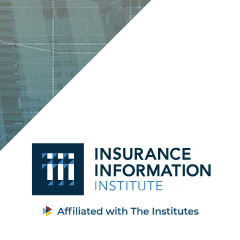By William Nibbelin, Senior Research Actuary, Triple-I
The workers compensation insurance industry experienced its second-best underwriting result in the past 20 years in 2023, with a net combined ratio of 87, according to Triple-I’s latest Issues Brief. It was the ninth year in a row of net underwriting profit following eight years of net underwriting losses.
Combined ratio – the most common measure of insurer underwriting profitability – is calculated by dividing the sum of claim-related losses and expenses by premium. A combined ratio under 100 indicates a profit. A ratio above 100 indicates a loss. Net combined ratio and net written premium growth rates for Workers Comp are analyzed, forecasted, and reported in Triple-I quarterly members-only webinars. Workers comp has outperformed the combined property and casualty insurance industry in net combined ratio each year since 2015.
Triple-I’s brief provides research results on trends contributing to recent success in workers comp, including employment, wages, claim frequency and severity, and market competition.
Workers comp premiums declined drastically in 2020 as the onset of the COVID-19 pandemic resulted in a reduction of employment across the U.S. The 2020 annual change in employment measured by total non-farm payroll of -5.8 percent was the only negative change since 2010. Despite this decrease, the annual compound increase in total non-farm payroll from 2010 to 2023 has been a steady 1.3 percent.
Using total non-farm payroll as the basis for exposure and reported claims at 12 months from S&P Global Market Intelligence by year, workers comp frequency has been declining steadily from 2014 to 2023 at an annual compound rate of negative 5.1 percent.
Using net ultimate loss and defense and cost containment at 12 months divided by reported claims, workers comp severity has been increasing at an annual compound rate of 4.4 percent from 2014 to 2023. However, using nominal GDP as the basis of severity similar to frequency, severity has been decreasing at the opposite rate of negative 4.4 percent. This is indicative of a severity pattern influenced more by increasing inflation than underlying historical cost trends.

